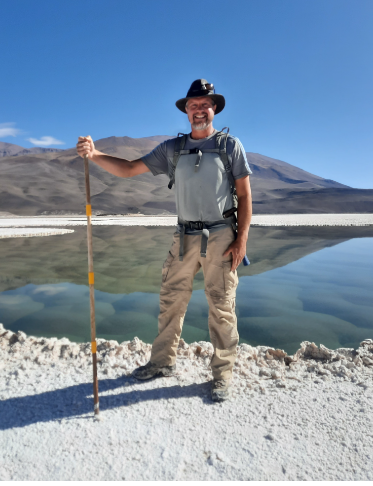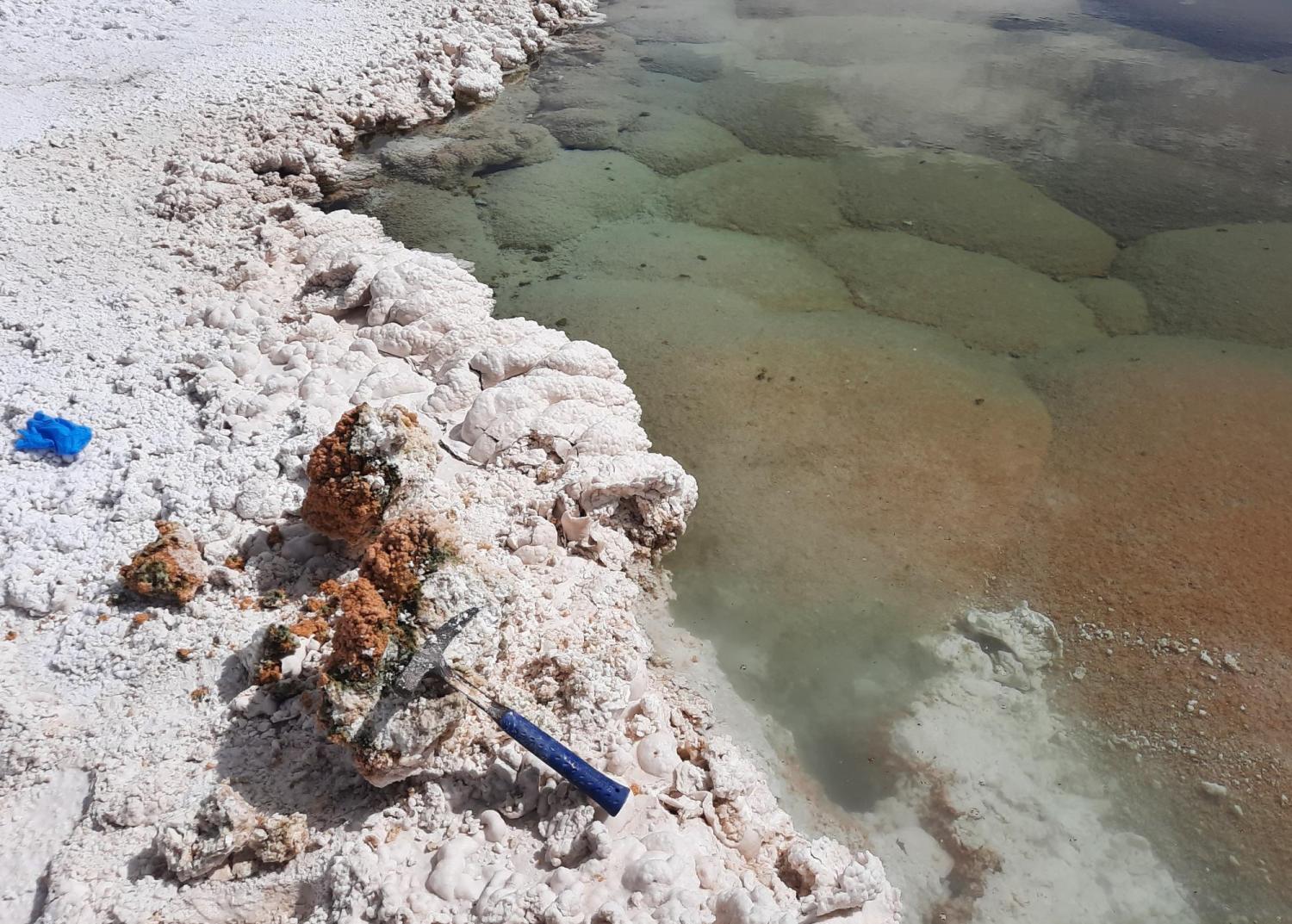Microbial communities known as stromatolites have been found in previously unstudied lagoons in Patagonia. Fossilized stromatolites represent some of the earliest evidence for life on Earth, and while these are not the only survivors today, they resemble the fossils in ways no other known examples do.
Although the individual organisms that make up stromatolites require microscopes to see, they combine into much larger communities. The approach is used by quite different species, most often cyanobacteria. However, cyanobacteria produce oxygen, which was rare in the early Earth’s atmosphere. Consequently, the first example may have been more similar to ones rarer in modern times, formed from sulfate-reducing bacteria. Both types form layers where photosynthesizing organisms pile on top of each other to gain access to sunlight, using sand and their own adhesive liquids to solidify.
Living stromatolites are known to grow to more than a meter (3.3 feet) high. Today, however, they are vulnerable both to species that could feed on them, or others that can outcompete them through faster growth. Consequently, they survive only in rare environments where other life cannot, such as waters salty enough to kill almost any other branch of the tree of life.
The most famous surviving stromatolites are in Shark Bay, Western Australia, which to numerous documentary makers’ delight grow near some of the oldest fossilized examples.
Shark Bay may get the glory, but in Puna de Atacama, almost 4,000 meters (more than 12,000 feet) above sea level, researchers have discovered even more interesting stromatolites occupying hypersaline (very salty) lagoons.
“This lagoon could be one of the best modern examples of the earliest signs of life on Earth,” Professor Brian Hynek of Colorado University, Boulder, said in a statement. “It’s unlike anything I’ve ever seen or, really, like anything any scientist has ever seen.”
Speaking for all of us, Hynek added; “It’s just amazing that you can still find undocumented things like that on our planet.”
For anyone skeptical that such a location could have escaped scientists’ notice for so long, consider how Hynek found it. Dr Mariá Farías of PUNABIO Environmental Consulting was showing him a region in northwest Argentina where she is searching for rare microbes for soil remediation. The pair had to drive for nine hours on dirt roads and stay in a village of 35 people who are dependent on a single spring for water, since rain is too rare to rely on surface water.

Brian Hynek stands in front of a lagoon in Argentina’s Puna de Atacama, possibly the closest surviving ecosystem to conditions in the first billion years of Earth, and maybe ancient Mars
Image Credit: Brian Hynek
On the last night there, Hynek was studying satellite images of the area and noticed what he took to be a set of lagoons 16 kilometers (10 miles) away. The pair drove as much of the way as they could without roads, and then hiked the rest, despite the requirement to carry water to deal with the merciless sun. “In some places, we were sinking up to our knees in salt slush,” Hynek said.
The trip was made worth it by the discovery of 12 lagoons spanning 10 hectares (25 acres). The waters are perfectly clear, having little life or dirt to muddy them, so when Hynek looked down, he could see green – and apparently growing – stromatolites larger than any he had ever seen alive. On the other hand, we’ve found fossilized stromatolites that are larger still.
Some of Hynek’s specimens are 5 meters (15 feet) wide and several feet tall, giants compared to other living examples, but fossils are known to have reached 6 meters (20 feet) high. Presumably, growing big was easier when there was nothing more advanced to threaten you.
Stromatolites would not have been the first life on Earth. Isotopic evidence suggests life started some 4.1 billion years ago, but the oldest stromatolite fossils are 3.5 billion years old. Perhaps there were earlier examples, but they were in places whose geology has not survived. More likely the earliest life just didn’t fossilize well, and stromatolites were the first that did.
When Hynek tested the chemistry of the find, he learned it had more in common with the ancient examples than those from elsewhere in the world. A specimen he broke open is mainly built of gypsum (CaSO42H2O), which is common in fossil stromatolites but had never been seen before in living versions. The living surface turned out to be cyanobacteria, but the core was pink from abundant archaea, better candidates for the original stromatolite-builders.

A rock hammer was used to crack open a stromatolite formation, revealing its pink center indicating the presence of archaea. More stromatolites grow under the water nearby.
Image Credit: Brian Hynek
The location offers little other than extremely saline and acidic waters, and sunlight unfiltered by the lower atmosphere. This, Hynek suspects, is probably a lot like the early Earth.
Many astrobiologists have visited the Atacama seeing it as the best easily reachable proxy for ancient Mars, and Hynek thinks his discovery vindicates that. “If life ever evolved on Mars to the level of fossils, it would have been like this,” he said. “Understanding these modern communities on Earth could inform us about what we should look for as we search for similar features in the Martian rocks.”
The research potential is obvious, but Hynek fears the site may have been found too late. One resource the Atacama does have in abundance is lithium, which has recently gone from being unwanted to the darling of mining companies thanks to its role in batteries. The area is about to be drilled to search for deposits nearby, and Hynek fears even the process of looking could destroy such sensitive systems. He and Farías have recovered RNA samples, but there is still far more left to learn.
In the race to tell the world what he has found, the researchers have yet to publish their findings, but presented them this week to the American Geophysical Union Fall Conference.
[H/T Mashable]
Source Link: A Previously Unknown Prehistoric “Lost World" Has Been Hiding Out On Earth